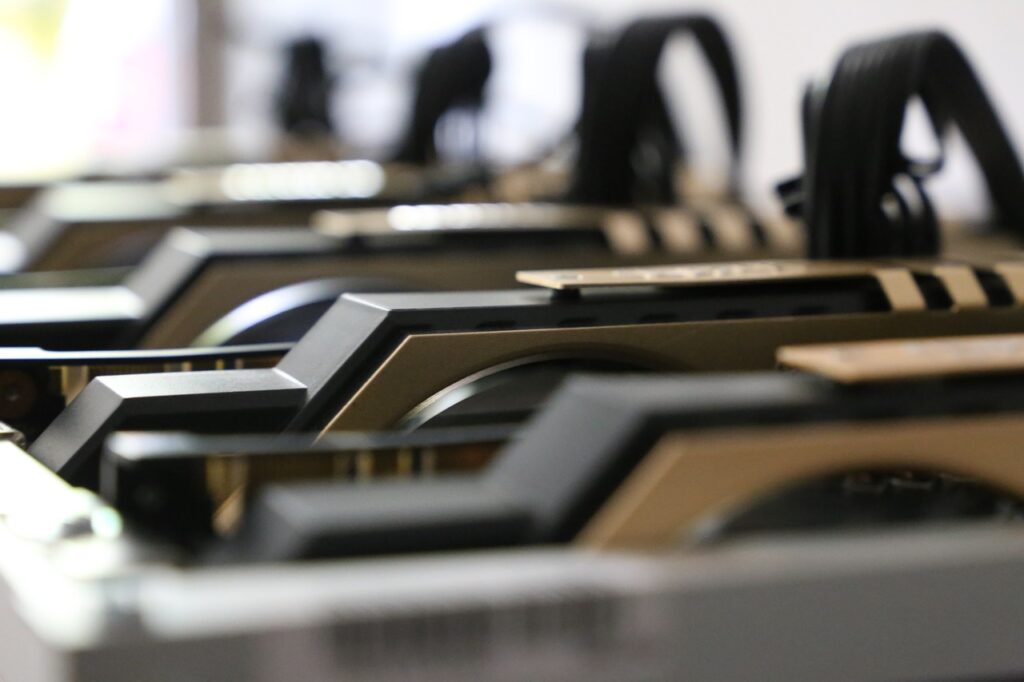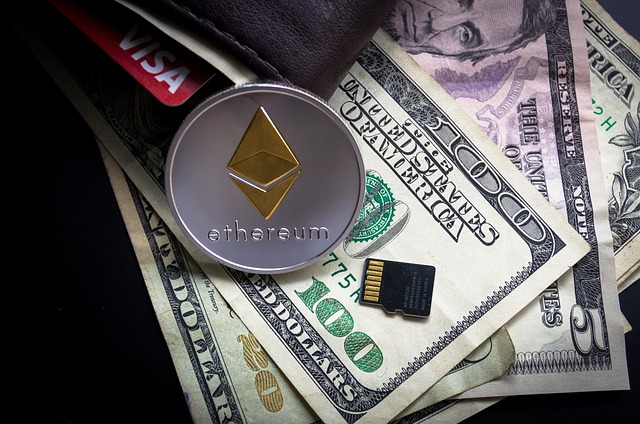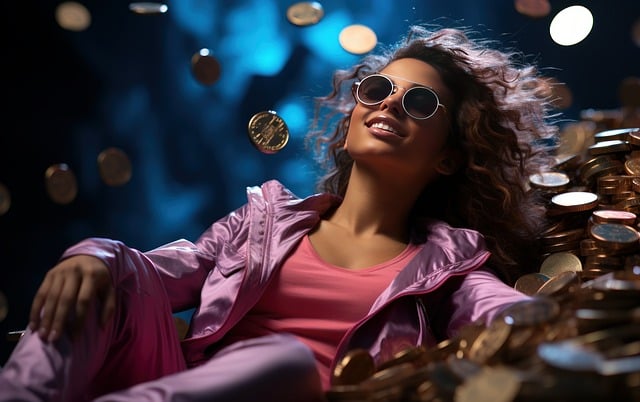From Concept to Reality: The Journey of DeFi Projects
From Concept to Reality: The Journey of DeFi Projects

The Birth of DeFi
Decentralized Finance, or DeFi, is a remarkable innovation that has transformed the traditional financial landscape. Born out of the desire to democratize access to financial services, DeFi emerged as a response to the limitations of the traditional banking system. With DeFi, people have the freedom to transact, invest, and earn interest on their assets without the need for intermediaries.
The birth of DeFi can be traced back to the invention of blockchain technology, specifically the creation of the Ethereum network. Ethereum introduced the concept of smart contracts, which are self-executing agreements coded on the blockchain. This breakthrough allowed for the development of decentralized applications (dApps) that could facilitate financial transactions without reliance on centralized authorities. The potential of this technology quickly caught the attention of visionaries seeking to revolutionize the financial system.
The Early Visionaries
In the early days of DeFi, there were a few forward-thinking individuals who saw the potential of decentralized finance and its ability to revolutionize the traditional financial system. These visionaries, armed with their knowledge of blockchain technology, set out to create platforms and protocols that would allow for peer-to-peer transactions without the need for intermediaries.
One of these early visionaries was Satoshi Nakamoto, the mysterious creator of Bitcoin. Nakamoto’s groundbreaking whitepaper introduced the world to the concept of a decentralized digital currency, laying the foundation for what would later become the backbone of DeFi. Another influential figure was Vitalik Buterin, who went on to co-found Ethereum, a blockchain platform that enabled the creation of smart contracts and decentralized applications (DApps). Together, these pioneers paved the way for the decentralized revolution that we are witnessing today.
Navigating the Regulatory Landscape
Navigating the regulatory landscape is no easy task for the decentralized finance (DeFi) industry. With innovation moving at breakneck speed, regulatory frameworks struggle to keep up. This leaves developers and entrepreneurs in a constant state of uncertainty, unsure of how their projects will be regulated or if they will be allowed to operate at all.
The decentralized nature of DeFi adds an extra layer of complexity to the regulatory puzzle.

Building the Foundation: Smart Contracts
Smart contracts have become the backbone of the decentralized finance (DeFi) movement. These self-executing contracts, running on blockchain technology, eliminate the need for intermediaries and foster trust among parties. With their ability to automatically execute and enforce agreements, smart contracts have laid the foundation for the burgeoning world of DeFi.
By leveraging smart contracts, DeFi protocols are able to provide secure and transparent financial services. These contracts operate based on predefined conditions and rules, ensuring that transactions are executed exactly as intended, without any reliance on a central authority. With the power of smart contracts, decentralized applications (dApps) have introduced a wide range of innovative financial instruments, from decentralized lending and borrowing platforms to tokenized derivatives and prediction markets. As the use of smart contracts continues to grow, the potential for DeFi to revolutionize the traditional financial system becomes even more apparent.
The Rise of Initial Coin Offerings (ICOs)
Initial Coin Offerings (ICOs) burst onto the scene in the cryptocurrency world around 2017, creating a frenzy among investors seeking to capitalize on the latest blockchain projects. These crowdfunding campaigns allowed startups to raise funds by selling tokens to the public in exchange for cryptocurrency like Bitcoin or Ethereum. With promises of massive returns and the potential to disrupt traditional fundraising methods, ICOs quickly gained popularity.
The allure of ICOs lay in their ability to democratize investing, giving ordinary individuals the opportunity to participate in early-stage projects that were previously reserved for venture capitalists. The belief was that by investing in these projects at an early stage, investors could potentially benefit from the exponential growth of the project and the value of the tokens. However, the lack of regulatory oversight and the absence of clear guidelines led to a wave of scams and fraudulent projects, causing many investors to lose substantial amounts of money. Despite this, ICOs played a crucial role in the evolution of decentralized finance, paving the way for new fundraising models and shaping the cryptocurrency landscape as we know it today.
The Challenges of Scaling
Scaling has become a paramount challenge for the decentralized finance (DeFi) ecosystem. As the popularity of DeFi projects continues to soar, the existing infrastructure and underlying technology face significant strain.

One of the main obstacles to scaling is the issue of network congestion. With the increasing number of participants in the DeFi space, the Ethereum network is struggling to handle the growing demand for transactions and smart contract executions. This has led to slower confirmation times and exorbitant fees, making it less affordable and efficient for users to engage with DeFi applications. Scalability solutions, such as layer-two protocols and off-chain solutions, are being explored to alleviate this challenge. However, implementing these solutions requires coordination and consensus among the various stakeholders, which can be a complex and time-consuming process. Scaling concerns remain a significant hurdle that must be addressed for DeFi to truly reach its full potential.
• Network congestion is a major challenge for scaling in the DeFi ecosystem
• The Ethereum network is struggling to handle the increasing demand for transactions and smart contract executions
• Slow confirmation times and high fees make it less affordable and efficient for users to engage with DeFi applications
• Scalability solutions like layer-two protocols and off-chain solutions are being explored to address this issue
• Implementing these solutions requires coordination and consensus among stakeholders, which can be complex and time-consuming
• Scaling concerns must be addressed for DeFi to reach its full potential.
The Evolution of Decentralized Exchanges
Decentralized exchanges (DEXs) have come a long way since their early beginnings in the world of decentralized finance (DeFi). Initially, these platforms struggled to gain traction due to limited liquidity and slower transaction speeds compared to their centralized counterparts. However, the visionaries within the DeFi community saw the potential of DEXs and tirelessly worked to overcome these obstacles.
One of the key factors contributing to the evolution of DEXs was the advancement of technology, particularly the rise of blockchain and smart contracts. These innovations allowed for the creation of trustless and transparent platforms, paving the way for decentralized exchanges to flourish. With the ability to execute peer-to-peer trades without intermediaries, DEXs became an attractive alternative for those seeking greater control over their assets and enhanced privacy. As a result, more users began to recognize the value and potential of DEXs, leading to increased adoption and development within the DeFi ecosystem.
Exploring New Frontiers: Decentralized Lending and Borrowing
Decentralized lending and borrowing have emerged as some of the most exciting frontiers in the world of DeFi. Traditional financial institutions have long held a monopoly on these services, but with the advent of blockchain technology, the barriers to entry have been broken down.
Now, anyone with an internet connection can become a lender or borrower, creating a more inclusive and accessible financial ecosystem. In decentralized lending, individuals have the opportunity to earn interest by lending their digital assets to others. This opens up a whole new world of possibilities, as individuals can now put their digital assets to work and earn passive income. On the other hand, borrowers can access loans without the need for traditional collateral or credit checks, making it easier for individuals to obtain much-needed capital for various purposes. With decentralized lending and borrowing, the power is in the hands of the people, potentially reshaping the way we think about finance.
The Emergence of Yield Farming
With the ever-growing popularity of decentralized finance (DeFi), new and innovative concepts have continued to emerge within the space. One such concept that has gained significant attention is yield farming. Yield farming essentially involves putting your cryptocurrency holdings to work in order to earn additional rewards or yield.
In simple terms, yield farming allows users to lend, borrow, or stake their digital assets in various protocols or liquidity pools to earn interest or receive additional tokens as rewards. By participating in yield farming, users can maximize their returns by taking advantage of the different incentives and opportunities offered by DeFi projects. This concept has attracted both experienced traders and newcomers to the DeFi space, as it presents an enticing way to generate passive income and potentially grow their cryptocurrency holdings. However, it is important to note that yield farming does involve certain risks, including smart contract vulnerabilities and potential impermanent loss, which requires users to carefully analyze and assess the associated risks before participating in any yield farming strategies.
The Future of DeFi
As the DeFi ecosystem continues to mature, the future holds promising possibilities. One exciting area that is gaining traction is cross-chain interoperability. With different blockchains having their own unique features and capabilities, enabling seamless communication and transfer of assets across multiple chains will be crucial for DeFi to reach its full potential. This will not only enhance user experience but also open doors to innovative use cases and collaborations between different protocols.
Another significant aspect of the future of DeFi is improved user interface and accessibility. Currently, interacting with DeFi protocols can sometimes be complex and intimidating for non-technical users. However, efforts are already underway to simplify the user experience and make DeFi more user-friendly. Intuitive dashboards, streamlined onboarding processes, and user-friendly mobile applications are being developed to attract a broader audience. By reducing barriers to entry and enhancing usability, DeFi has the potential to become more inclusive and widely adopted in the future.
What is DeFi?
DeFi stands for decentralized finance, which refers to the use of blockchain technology and smart contracts to create financial products and services that operate without the need for intermediaries like banks.
How did DeFi start?
DeFi started with the visionaries who saw the potential of blockchain technology to revolutionize the financial industry. They believed in empowering individuals and removing the need for centralized authorities.
Are there any regulations for DeFi?
Navigating the regulatory landscape for DeFi can be challenging. As it is a relatively new field, regulations are still being established. However, it’s important for DeFi projects to comply with existing financial regulations to ensure trust and security for users.
What are smart contracts?
Smart contracts are self-executing contracts with the terms of the agreement written directly into code. They automatically execute actions based on predefined conditions, eliminating the need for intermediaries in financial transactions.
What are Initial Coin Offerings (ICOs)?
ICOs were a popular way for blockchain projects to raise funds in the early days of DeFi. It involved selling tokens to investors in exchange for cryptocurrency, allowing them to participate in the project’s future success.
What are the challenges of scaling DeFi?
Scaling is a significant challenge for DeFi projects as they strive to handle a large number of transactions securely and efficiently. Issues with network congestion, high gas fees, and limited scalability have to be overcome for mainstream adoption.
How have decentralized exchanges evolved?
Decentralized exchanges (DEXs) have evolved to provide users with the ability to trade cryptocurrencies directly from their wallets, without relying on a centralized authority. They offer greater privacy, security, and control over funds.
What is decentralized lending and borrowing?
Decentralized lending and borrowing platforms allow users to lend their cryptocurrencies and earn interest or borrow assets by using their own crypto as collateral.

What is yield farming?
Yield farming is a concept where users provide liquidity to DeFi protocols in exchange for rewards, typically in the form of additional tokens. It allows users to earn passive income by lending their assets to the protocol.
What does the future hold for DeFi?
The future of DeFi is bright, with potential for further innovation and adoption. As scalability improves and regulations become clearer, we can expect DeFi to become more integrated into the traditional financial system, offering greater financial freedom and accessibility for all.
Todays Featured Product:
Buy, exchange and grow your crypto securely with a Ledger hardware wallet, combined with the Ledger Live app. It’s never been easier to keep your crypto safe and accessible. Buy direct from Ledger.com and get todays Special Offers Here.




